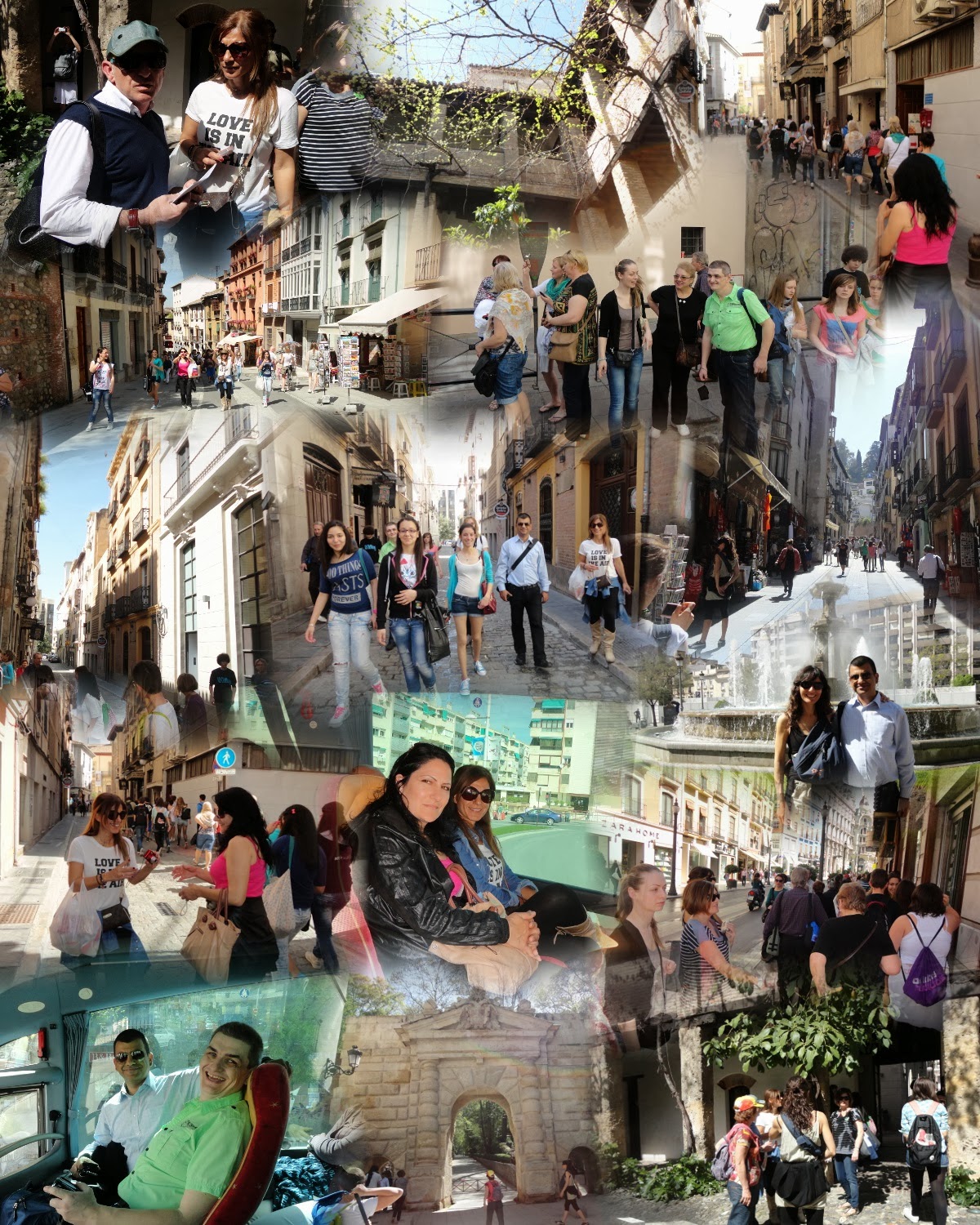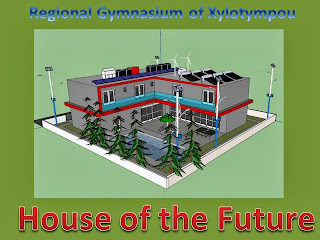Life Long Learning

Κυριακή 10 Νοεμβρίου 2013
Σάββατο 9 Νοεμβρίου 2013
Reunion in Italy - History of Jewish People in Ancona
ANCONA (Marche), Adriatic seaport
in Italy. According to Early Christian legends, the first bishop of Ancona was
no less than the Great Rabbi of Jerusalem, who took the Christian name of
Quincus after baptism. Jews were living near Ancona in 967. In that year a
document attests that Peter, the archbishop of Ravenna, gave land in perpetual
rent to the Jew Eliahu, son of Justus. In the Codex De Rossi, dated to the
tenth century, there is a reference to Nathan, son of Machir, son of Menahem of
Ancona. It seems that there was already a synagogue in Ancona, destroyed in the
earthquake of 1279, as the paytan Solomon ben Moses ben Yekutiel De
Rossi of Rome wrote a seliḥah on the subject.
By about 1300, there was an
organized Jewish community in the city on whose behalf the poet *Immanuel of
Rome sent a letter to the Rome community intimating that as the Ancona
community was in economic straits and suffered from persecution, it should not be
subjected to heavy taxation (Maḥberet 24). Most of the Jews who settled
in Ancona came from the Muslim East. Jews probably engaged in moneylending in
Ancona in the first half of the 15th century. There were also many
merchants engaged in maritime trade with the Eastern Mediterranean. In 1427 the
Franciscan Giacomo della Marca, an enthusiastic disciple of *Bernardino da
Siena, tried to force the Jews in Ancona to wear the Jewish *badge and to
restrict Jewish residence to a single street. He was in part successful, as the
city senate indeed passed restrictive measures. Around 1450 the Jewish
population of Ancona numbered 500 persons, representing 5% of the city's
population. Both in 1456 and 1488 Jews were accused of ritual murder.
The arrival of refugees
from the Iberian Peninsula opened a new chapter in the history of the Ancona
Jewish community. The first to arrive, in 1492, were refugees from *Sicily.
They were joined in 1497 by refugees from Portugal, and after 1510 by others
from the Kingdom of *Naples. An order to wear the badge was again issued in
1524, but was revoked four years later. Solomon *Molcho visited the community
in 1529 and stimulated messianic enthusiasm there. The assumption by the papal
legate of authority in Ancona in 1532 had mixed results for the community. As
Ancona was declared a free port, many Jewish merchants took advantage of its
excellent harbor facilities to trade with the Levant. At first mercantile
interests prevailed in papal policy and Pope Paul III invited merchants from the Levant to settle
there regardless of their religion. In 1541 he encouraged the settlement of
Jews expelled from Naples and in 1547 extended the invitation to Marranos, whom
he promised to protect against the Inquisition. *Julius III renewed these guarantees, and about
100 Portuguese Marrano families apparently settled in Ancona. Jews from Germany
also arrived in this period. Thus, around 1550 the Jewish community numbered
around 2,700 persons.
In 1555, however, *Paul IV began to institute anti-Jewish
measures in the Papal States. The Papal *Bull of July 12, 1555, was implemented
in full in Ancona. The Jews were segregated in a ghetto, built the following
year, prohibited from owning real property, and restricted to trade in
second-hand clothing. Papal opposition to the Marranos proved particularly
implacable, and a legate was sent to Ancona to take proceedings against them.
Some managed to escape to Pesaro, Ferrara, and other places, but 51 were
arrested and tried. Twenty-five were burned at the stake between April and June
1555. The horrors of the tragedy, mourned throughout the Jewish world, inspired
touching elegies, still recited locally on the Ninth of Av. The event moved
Dona Gracia *Nasi to organize a boycott of Ancona. The boycott, however, caused
dissension within Jewry, some rabbis supporting the action while others opposed
it, fearing that the pope might retaliate against Jews living under his
jurisdiction.
Still, the legal position
of Ancona Jewry changed more than once during the second half of the 16th
century. It temporarily improved under Pius IV, but again deteriorated under Pius V in 1567. Ancona was one of the
cities in the Papal States (together with Rome and Avignon) from which the Jews
were not expelled by the Pope in 1569, being tolerated because of their utility
in the Levant trade; nevertheless many decided to leave. Some amelioration was
afforded by the favorably disposed Sixtus V in 1586 and Ancona was again exempted when
*Clement VIII renewed the
decree of expulsion in 1593. However by the beginning of the 17th
century, the Ancona community was reduced to a state of debility that lasted
through two centuries. Any temporary improvement that occurred was prompted by
economic considerations. It is interesting that in 1659, when Pope Alexander VII ordered the closing of shops
outside the ghetto, the city senate opposed him on the grounds that this would
adversely affect the economic situation of the city. The decree was revoked. A
local Purim was observed on Tevet 21 to commemorate the deliverance of the
community from an earthquake that occurred on December 29, 1690.
In the 18th
century the Ashkenazi community slowly began to emerge. The *Morpurgo family
was the most important of the Ashkenazi families. In 1763 there were 1,290 Jews
living in Ancona. As late as 1775 Pius VI again enforced all the most extreme
anti-Jewish legislation.
During the occupation of
Ancona by the army of *Napoleon between 1797 and 1799, the Jews were fully
emancipated. The gates of the ghetto were removed, and two Jews, Ezechia and
Salvatore Morpurgo, sat on the new municipal council, although the Jews, as
well as the local population, were obliged to contribute heavy war levies. In
1814, after Napoleon's downfall, Ancona reverted to the Papal States, and in
part the former discriminatory legislation was reimposed by Pope Leo XII. The revolutionary activity of 1831
resulted in the destruction of the gates of the ghetto. However, only in 1848
was obligatory residence in the ghetto abolished. Various Jews contributed to
the Italian Risorgimento, such as David Almagià, Giuseppe Coen Cagli, and
Pacifico Pacifici. Ancona Jews paid a high price for their participation in the
Italian Risorgimento. In 1860 the pontifical general Lamoriciére demolished the
Levantine synagogue to punish the Jewish community. The Jews obtained complete
civic rights in 1861, when Ancona was annexed to the Kingdom of Italy. After
the unification the richest elements of the community took part in the
municipal life of the city. In 1869 Gioacchino Terni was called upon to direct
the Chamber of Commerce, and from 1924 to 1927, Mario Iona. The Jewish
population of Ancona numbered approximately 1,600 in the 19th
century.
The size of the community
and its widespread connections attracted many noted rabbis and scholars
throughout the centuries, including the humanist *Judah Messer Leon (15th
century), the physician *Amatus Lusitanus, and Moses *Basola (16th
century), Mahalalel Hallelyah of Civitanova, Hezekiah Manoah Provenzal, Joseph
Fermi (17th century), Samson *Morpurgo, Joseph Fiammetta (18th
century), Jacob Shabbetai *Sinigaglia, Isaiah Raphael Azulai, David Abraham
Vivanti, Isaac Raphael Tedeschi (19th century), and H. Rosenberg,
who published several monographs on local history.
In 1938 there were 1,177
Jews in Ancona. During World War II, persecution was more individual than collective in character. The
Germans, and eventually the Italian Fascists, demanded tributes to allow the
Jews to live. In 1944 soldiers of the Jewish Brigade arrived in Ancona, and
helped the community get back on its feet. In 1967, there were 400 Jews in
Ancona. In 2004 the figure was around 200, with two synagogues in operation,
the Levantine and the Italian, in the same building on Via Astagno. The
original Levantine synagogue, originally erected in 1549 by Rabbi M. Bassola,
was demolished in 1860, rebuilt in 1861 and inaugurated in 1876, utilizing
elements of the previous synagogue.
Source - The Jewish Virtual Library
Reunion in Italy - The House of the Future by Cyprus Team - Video Presentation
The House of the Future by Cyprus Team - Video Presentation
The Cypriot Monuments of UNESCO
The Cypriot Monuments of UNESCO
Church of Panagia of Asinou
Church of Timios Stavros (Holy Cross) in Pelentri
3D - Church of Timios Stavros (Holy Cross) in Palentri
By studying the architecture of the Church of Timios Stavros (Holy Cross) in Pelentri Church of Timios Stavros (Holy Cross) and using 3D Graphics Google Sketch up, the graphics team of Regional Gymnasium of Xylotympou designed the Church of Timios Stavros (Holy Cross).
Video: Church of Timios Stavros (Holy Cross)
Video: Church of Timios Stavros (Holy Cross)
3D Graphics - Church of Panagia (Our Lady) in Asinou
Church of Panagia (Our Lady) of Asinou
By studying the architecture of the Church of Panagia of Asinou Church of Panigia of Asinou and using 3D Graphics Google Sketch up, the graphics team of Regional Gymnasium of Xylotympou designed the Church of Panagia of Asinou.
Video : Church of Panagia of Asinou
Παρασκευή 8 Νοεμβρίου 2013
3D Graphics - Hadjigeorgakis Kornesios Mansion
Hadjigeorgakis Kornesios Mansion
By studying the architecture of Hadjigeorgakis Kornesios Mansion in Nicosia Hadjigeorgakis Kornesios Mansion and using 3D Graphics Google Sketch up, the graphics team of Regional Gymnasium of Xylotympou designed the Hadjigeorgakis Kornesios Mansion.
Video : Hadjigeorgakis Kornesios Mansion
3D Graphics - Church of Saint Lazarus in Larnaca
Church of Saint Lazarus
By studying the Byzantine architecture of St. Lazarus Church in Larnaca Church of Saint Lazarus and using 3D Graphics Google Sketch up, the graphics team of Regional Gymnasium of Xylotympou designed the Church of Saint Lazarus.
Video: Church of Saint Lazarus
Regional Gymnasium of Xylotympou Graphics Team
Final Product - The House of the Future in Cyprus
Final School Product
eco friendly house
After a long research and study of the architecture in Cyprus throughout the history the Comenius Architeaching Team of Teachers and Students of Regional Gymnasium of Xylotympou proposed the most suitable design of the House of the Future in Cyprus. We studied the architecture in Cyprus starting from 7000 BC with the first neolithic settlement in Choirokoitia Choirokoitia and moving to the various periods where Cyprus was conquered by the Greeks, the Romans, the Byzantines, the Venetians, the Ottomans and the British. The house of the future in Cyprus as proposed by our team will be environmental friendly. The structure of the house will not change much from as we know it today. People would need a kitchen, a bathroom, bedrooms, they would need to have small or big windows for viewing outside and for allowing plenty of sunshine to come into the house and to allow plenty of fresh air to flow into the house to keep it cool and fresh. Recycle material will be used as well as renewable energy. Photovoltaic cells with battery packs and D.C. to A.C. inverter will be used to provide the house with electricity for lights, appliances etc. and the Air-conditioning system. Small Wind Generator with battery packs and power inverter will be used to provide the house with electricity for lights, appliances etc. and the Air-conditioning system.
Picture: The Proposed Design
Video: The House of the Future in Cyprus
Εγγραφή σε:
Αναρτήσεις (Atom)



























